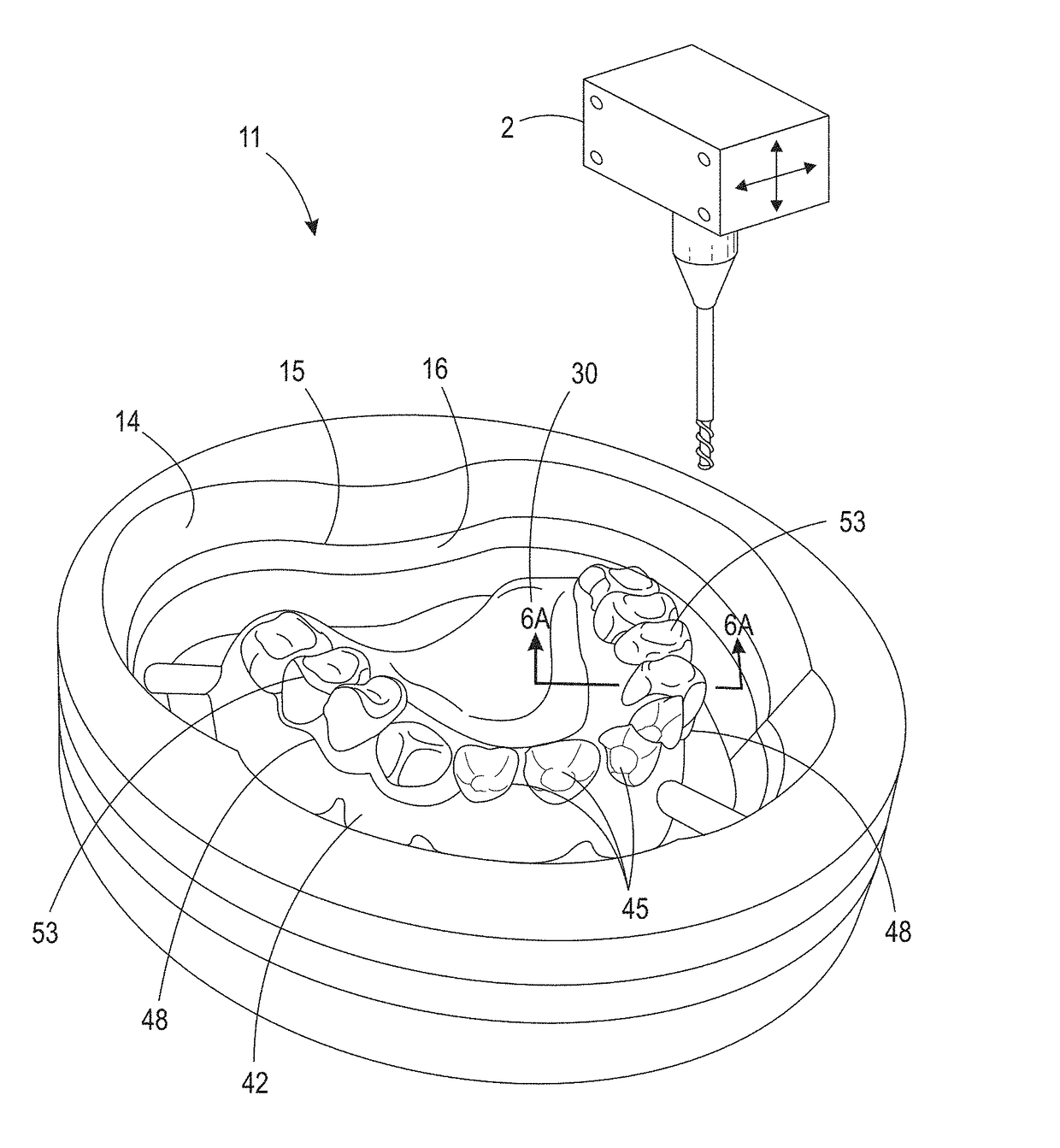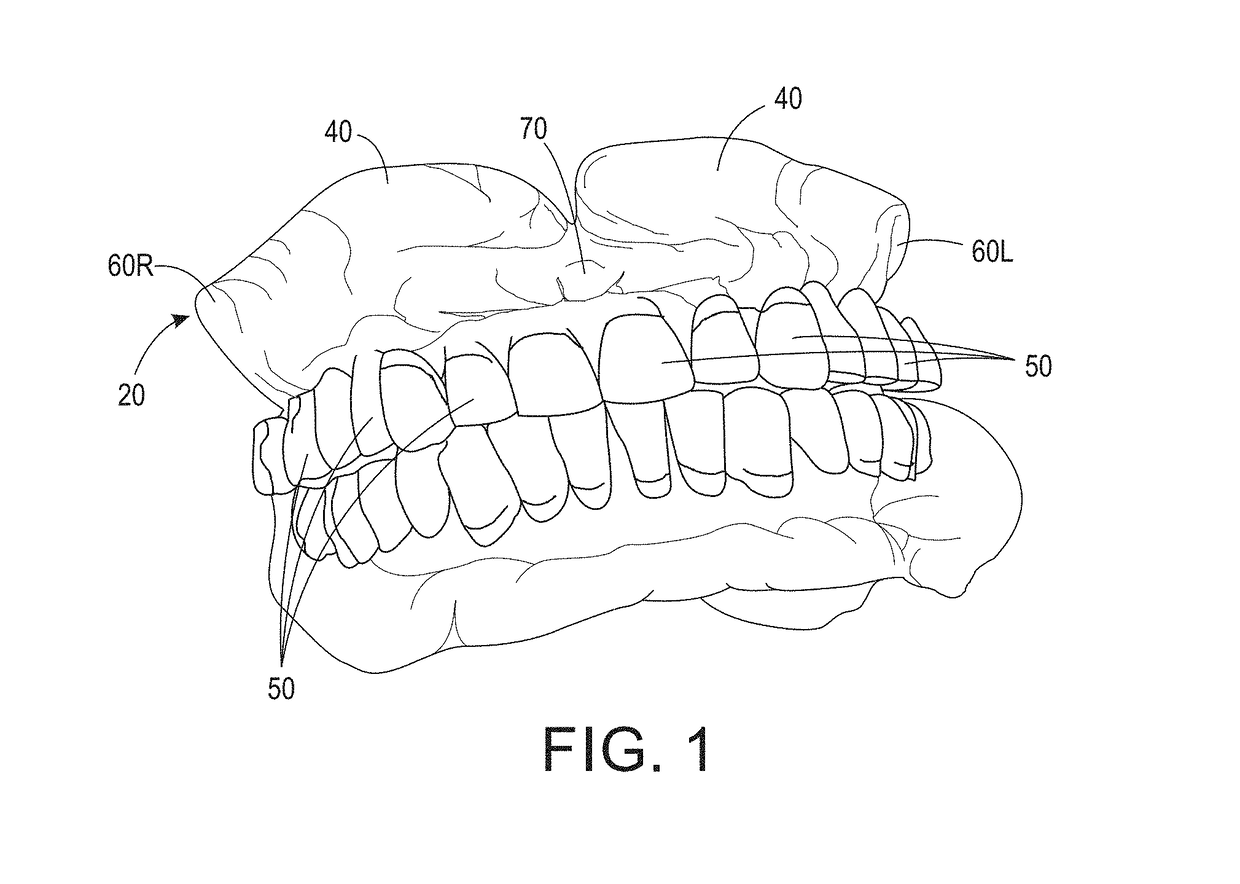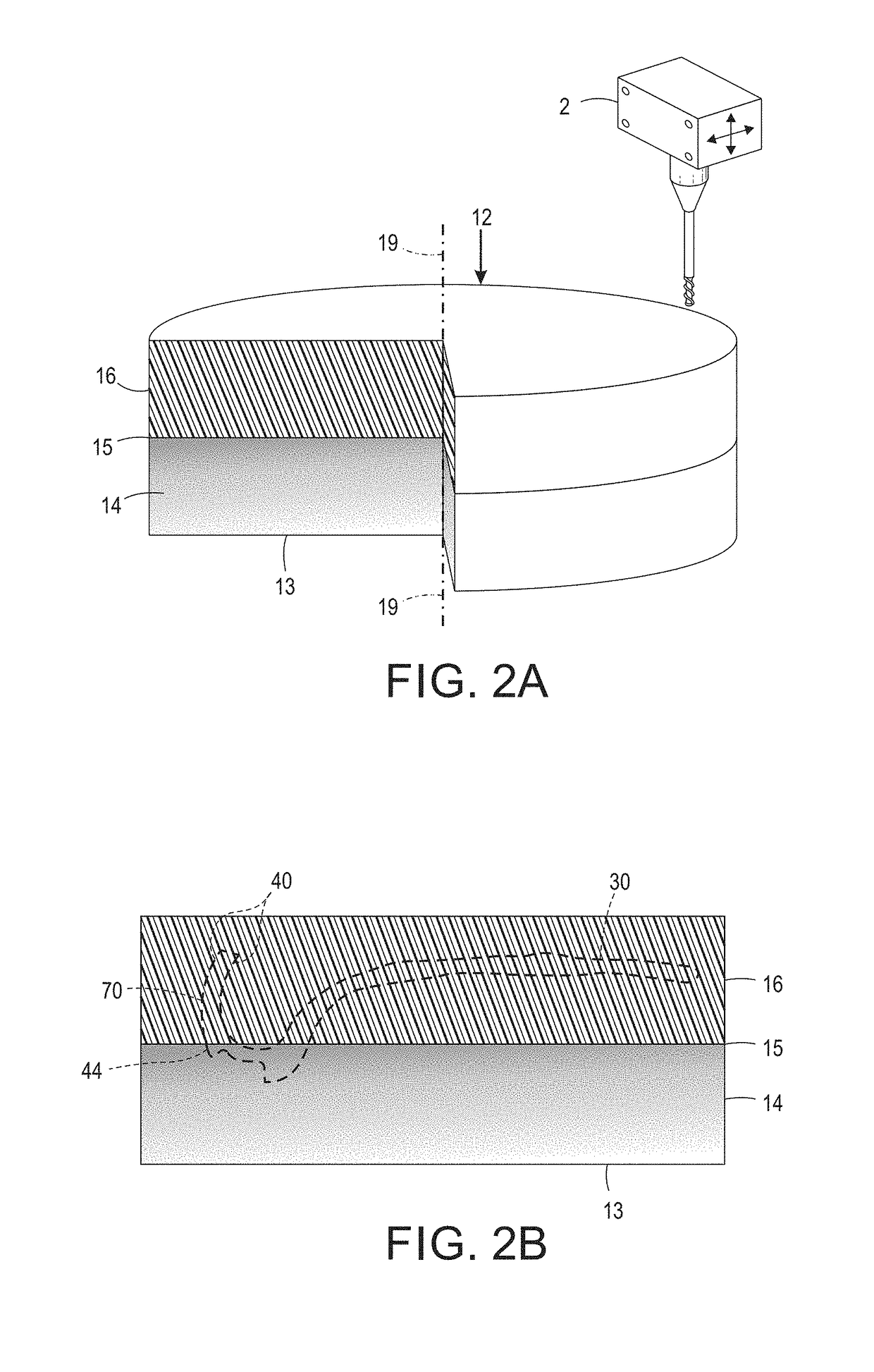Formed denture and method of making same
a technology of dentures and dentures, applied in the field of dentures, can solve the problems of high labor intensity, improper occlusion of upper and lower teeth, and high labor intensity in the manufacture of dental prostheses, and achieve the effect of low cos
- Summary
- Abstract
- Description
- Claims
- Application Information
AI Technical Summary
Benefits of technology
Problems solved by technology
Method used
Image
Examples
Embodiment Construction
[0067]For a general understanding of the present invention, reference is made to the drawings. In the drawings, like reference numerals have been used throughout to designate identical elements. The drawings are to be considered exemplary, and are for purposes of illustration only. The dimensions, positions, order and relative sizes reflected in the drawings attached hereto may vary.
[0068]In the following disclosure, the methods of the present invention are described in the context of their use for fabrication of an upper denture, which includes a palatal region. However, they are not to be construed as being limited only to use in fabricating upper dentures. The methods are adaptable to fabrication of lower dentures as well as other dental prostheses. Additionally, the description may identify certain structures with the adjectives “top,”“upper,”“bottom,”“lower,”“left,”“right,” etc. These adjectives are provided in the context of use of the method in fabricating an upper denture, a...
PUM
| Property | Measurement | Unit |
|---|---|---|
| flexural strength | aaaaa | aaaaa |
| depth | aaaaa | aaaaa |
| depth | aaaaa | aaaaa |
Abstract
Description
Claims
Application Information
 Login to View More
Login to View More - R&D
- Intellectual Property
- Life Sciences
- Materials
- Tech Scout
- Unparalleled Data Quality
- Higher Quality Content
- 60% Fewer Hallucinations
Browse by: Latest US Patents, China's latest patents, Technical Efficacy Thesaurus, Application Domain, Technology Topic, Popular Technical Reports.
© 2025 PatSnap. All rights reserved.Legal|Privacy policy|Modern Slavery Act Transparency Statement|Sitemap|About US| Contact US: help@patsnap.com



